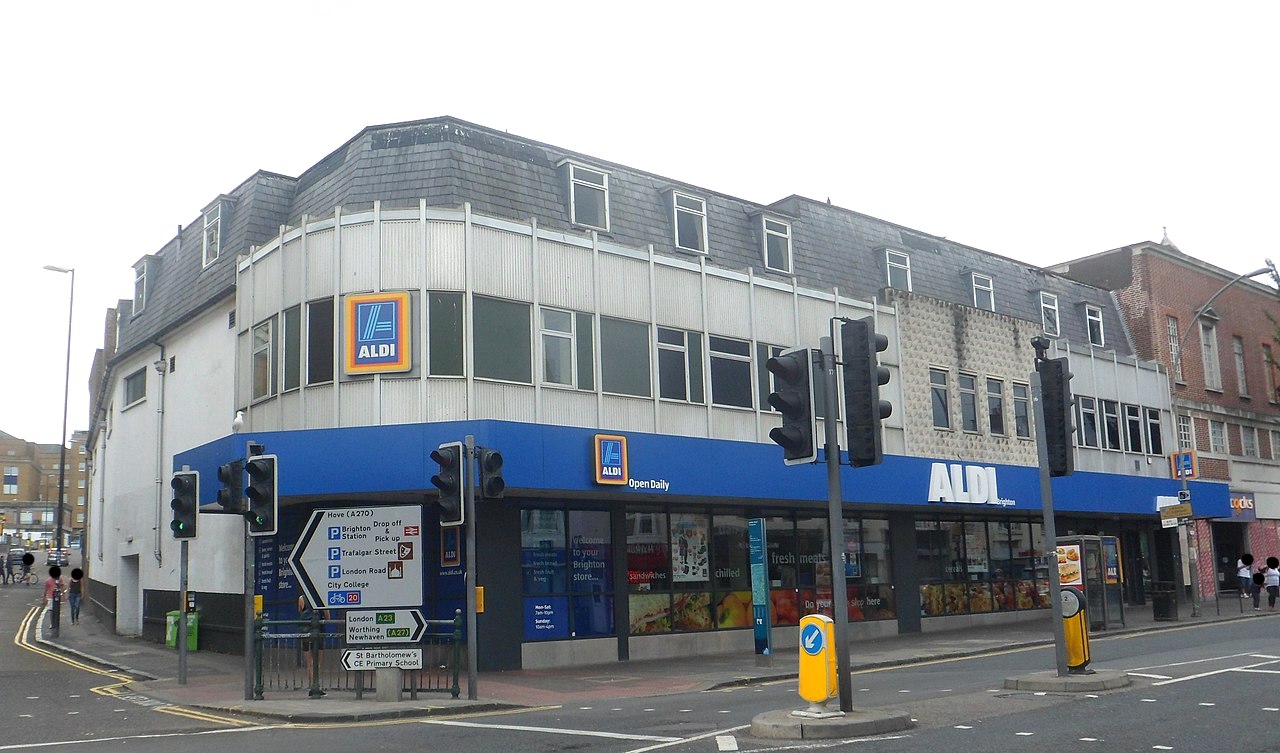

Aldi’s competitive strategy involves cost-based advantages that enable retail business growth strategies. The discount supermarket chain continues to grow internationally despite strong competitors and market saturation. This generic competitive strategy and the intensive growth strategies help bring the goals of Aldi’s vision statement and mission statement to fruition. For example, the company’s competitive advantages and revenue growth strengthen capabilities for reaching strategic goals for retail business success. While Aldi faces competitive challenges, its generic strategy maintains competitive advantages for attracting target customers and ensuring profitable operations despite low selling prices. Aldi’s growth strategies aim for a stronger market presence and higher sales figures based on a larger market share.
Based on Michael E. Porter’s generic strategies for competitive advantage, Aldi focuses on cost as a defining factor in doing business. The company’s brand image and merchandise prices depend on this competitive strategy. Based on Igor Ansoff’s matrix of intensive growth strategies, Aldi focuses on attaining a larger share of its target markets. The company’s expansion depends on these growth strategies for its multinational retail business.
Aldi’s competitive strategy is cost leadership, which translates to low business costs and the ability to offer low and competitive selling prices. In Michael E. Porter’s model, this generic competitive strategy requires that the discount supermarket chain maintain low operating costs. Competitive advantages based on low business costs mean that Aldi’s generic strategy ensures competitiveness against other retailers, including Lidl, Whole Foods, Costco, Walmart, and Amazon’s e-commerce and brick-and-mortar stores. This competitive strategy also helps deter Home Depot, which is not a direct competitor, from diversifying to offer food products through new business operations similar to Aldi’s.
Aldi’s business model involves low costs that support low prices for private-label products that are alternatives to many mainstream brands that are more expensive. With cost leadership as a generic competitive strategy, cost-effective operations lead to competitive advantages, including the business strengths described in the SWOT analysis of Aldi. These strengths empower the company, especially in competing with big-box retailers that offer low prices. The Five Forces analysis of Aldi depicts a highly competitive market where effective cost leadership as a competitive strategy can support long-term business growth and success. This generic competitive strategy determines cost limits and the productivity and process efficiency targets in Aldi’s operations management.
Aldi’s primary growth strategy is market penetration involving additional stores, such as the ones in the United States. In Igor Ansoff’s matrix, this intensive growth strategy has the goal of generating more sales revenues from the same target customers in the company’s current retail markets. For example, adding new grocery stores in the U.S. can increase Aldi’s revenues and grow the business. Also, the company can sell more merchandise to the same customers through enhanced marketing and related strategies. Aldi’s marketing mix (4P) reflects business efforts in implementing this intensive growth strategy. New store locations based on market penetration as a growth strategy can lead to changes in Aldi’s business structure (company structure), especially geographic divisions for operations in various markets.
Aldi also relies on product development as an intensive growth strategy, although to a limited extent. This strategy aims to grow the retail business through new products for more sales. For example, Aldi introduces private-label products whose close alternatives are difficult to find elsewhere. Through this growth strategy, the company attracts buyers to its stores. External factors, like the ones described in the PESTLE/PESTEL analysis of Aldi, inform decisions about the kinds and characteristics of new products to develop in implementing this intensive growth strategy.